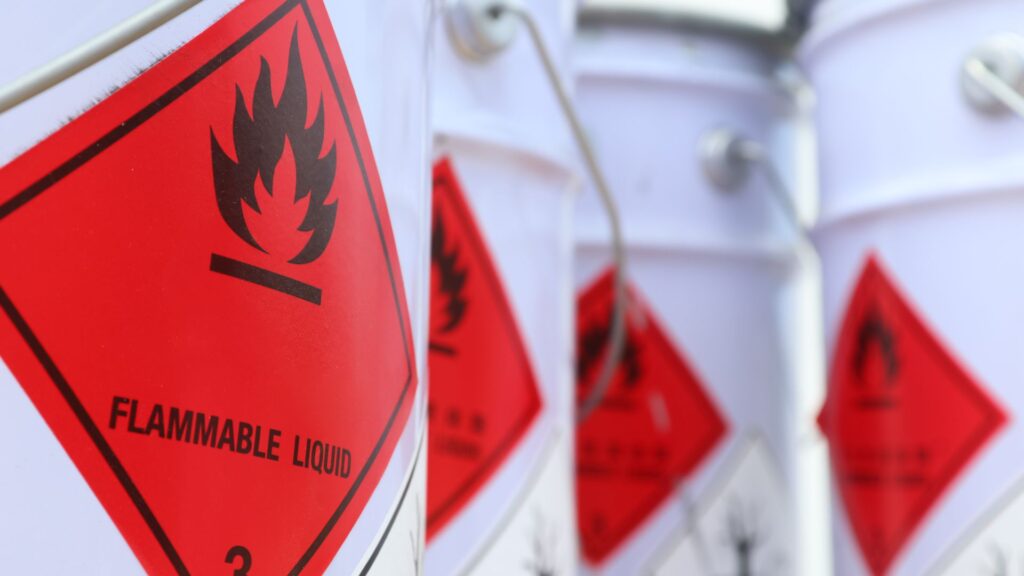
Many businesses are required to store flammable liquids and chemicals.
While this can undoubtedly be potentially hazardous, there are appropriate steps that can be taken to minimise risks.
Many of these you may already know. But it never hurts to refresh your memory.
This blog will examine some of the best practices when it comes to handling and disposing of flammable materials.
Common Flammable Liquids
What is a flammable liquid?
Flammable liquids are liquids considered to have a flashpoint of fewer than 100 degrees Fahrenheit or less than 38 degrees Celsius.
Let’s look at some of the most common flammable liquids likely to be found on a site.
These can include:
- Kerosene
- Benzene
- Methylated Spirits
- Heating Oil
- Methanol
- Paint Remover
While the majority of flammable liquids can be found in industrial workplaces, it is worth remembering that some flammable liquids can be found in the home too.
For example, you might find some of these underneath the kitchen sink or in the bathroom cabinet:
- Rubbing alcohol
- Aerosol cans
- Nail polish/remover
- Linseed oil
- Turpentine/Paint thinner
- Hand sanitiser
Storing Flammable Liquids
Now that we’ve identified some of the most common flammable liquids, we can look at some of the best ways to store them.
When it comes to commercial and industrial premises, flammable liquids should be stored in purpose-built flammable storage units.
Any containers used to house flammable liquids need to be clearly labelled so their contents can be easily identified.
Only trained, authorised people should be allowed to enter flammable storage areas to minimise the number of people coming into close contact with liquids. And ideally, the number of flammable materials stored should be kept to a minimum.
When storing flammable liquids, one thing to bear in mind is to be wary of any potential ignition sources. No smoking should be allowed anywhere near designated storage areas. Nor should any open flames. And any electric tools that could potentially cause sparks should be kept at a distance.
Disposing Of Flammable Liquids Safely
When it comes to disposing of waste flammable liquids, there are a number of best pratice guidances to follow.
Here are some of the most common:
- Waste flammable liquids should be placed in clean drums (of compatible material). These should be vented, grounded and bonded.
- Just like storing them for future use, waste flammable liquids should be labelled, segregated, and stored as per U.K. regulations.
- Don’t forget about any cloth, paper or other solid materials that have been soaked with flammable liquids. These will also need to be placed in approved metal waste disposal containers with self-closing lids.
- These containers should be emptied daily to avoid the risk of spontaneous combustion.
It’s worth noting that even “empty” flammable liquid containers could still pose a danger. The vapour from just 14ml of flammable fluid can create an explosive atmosphere in a typical 180-litre drum.
- An obvious one (we hope), but waste flammable liquids should NEVER be poured down drains. To comply with relevant environmental laws, hazardous waste disposal companies should be used to take them off your premises. Do your research and ensure they have the right legal certifications.
Contact Vinci Response
We are proud holders of an Upper Tier waste carriers license and will happily provide verification on request.
If you want to find out more information about hazardous waste removal or our fire and smoke damage restoration services, contact Vinci Response today.
Our experts will be happy to talk through any professional cleaning queries.
Call us on 0808 506 3971 or email [email protected]